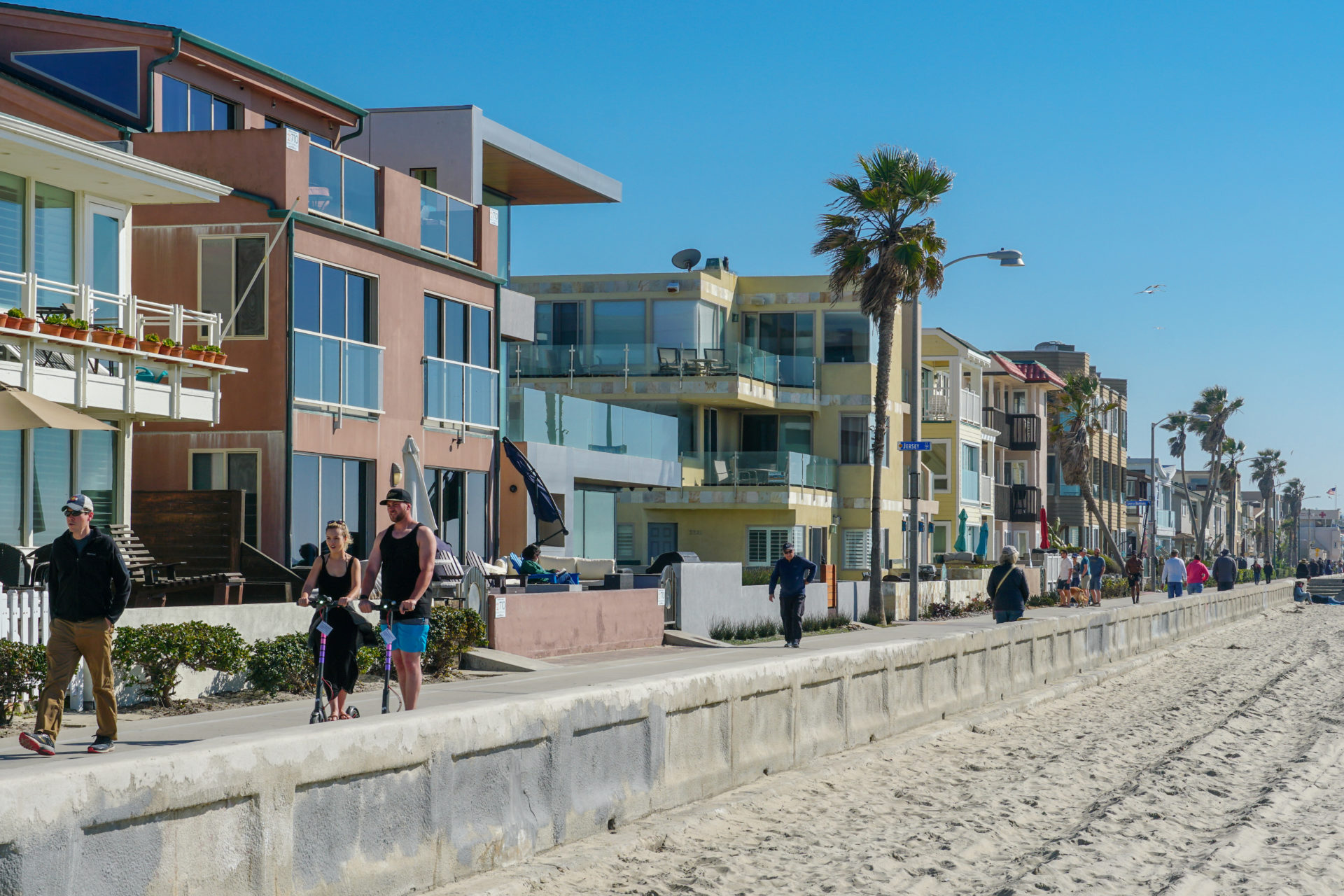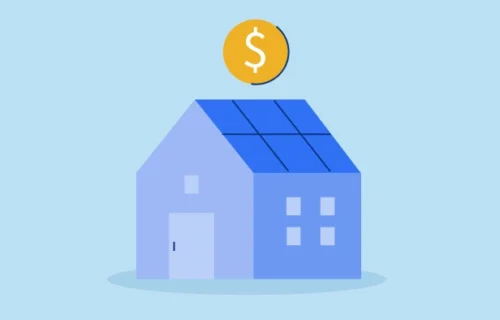
Connect with a Lima One expert today!
If you’d like to know more about this topic or see how it applies to your project, let’s talk.
The Best Rental Markets in The US For Investors: Top 5 Cities
Despite a shortage of labor, an unprecedented spike in lumber and materials prices, and a housing shortage the likes of which we’ve never seen, the U.S. real estate market continues to thrive—especially when it comes to single-family home rentals.
As more people trade in big cities for life in suburban areas, the country’s housing shortage and increasing home prices have driven many to seek single-family rentals and thus created a more attractive rental market.
The single-family rental market has thrived over the past year because older millennials have traded in big city apartment life for larger dwellings in the suburbs. Because so many people suddenly needed space in their homes for an office or classroom, COVID-19 created a demand for more space in less densely populated suburban areas.
At the same time, the surging price to purchase a home has left many who prefer a single-family home lifestyle opting to rent until the market turns and becomes more buyer-friendly. Major metropolitan cities across the country have become hotbeds for single-family rental investments, but some markets are especially scorching. These five cities are currently several of the best rental markets in the U.S. and show great potential for real estate investors.

5. Las Vegas, NV
The Las Vegas rental market is currently one of the best rental markets in the U.S. and showing signs of strength.
Despite a cooling of the rental market in the last year, prices remain above pre-pandemic levels and attempts to legislate growing rent prices have been unsuccessful.
Housing demand remains high, rental occupancy has increased, and construction permits have skyrocketed in Sin City. If you’re wondering where to invest in real estate this year, experts would tell you Las Vegas is a prime place.
In July 2024, U.S. News ranked Las Vegas as #9 on its list of “Markets to Watch” based on increased housing demand, housing supply, and financial health. The Las Vegas rental market is experiencing sustained high rent prices and low vacancy rates – despite an unemployment rate much higher than the national average. It’s a positive sign for real estate investors in the area as it demonstrates a growing demand for rentals.
The Las Vegas price-to-rent ratio is 25%, ranking 19th of the 52 largest metros. This indicates that the best advantage is to rent versus own in the Las Vegas area, making Las Vegas one of the best rental markets in the U.S. Vegas’ housing market statistics are a positive sign for real estate investors considering investments in the area as they demonstrate a growing demand for rental properties.
Las Vegas Real Estate Market Stats:
- Population (metro area): 2,953,000
- Occupancy rate: 93.2
- Percentage of renters: 45%
- Las Vegas average monthly rent: $1,472
- Nevada average monthly rent: $1,526
- U.S. average monthly rent: $11,739

4. Denver, CO
The Denver, Colorado metro area has been hugely popular among top real estate investors for several years. This popularity being a major reason why Denver is among the best rental markets in the US and annually ranks among the hottest for housing growth. A growing economy, strong job market, diverse and exciting lifestyle, and beautiful surroundings are just a few reasons why Denver continues to see increased population growth.
The residential real estate market in Denver continued to churn unimpeded by the pandemic. The rest of the country has been experiencing a shrinking housing inventory for the past year, but Denver is unique in that its housing crunch and tight inventory began before the pandemic.
When COVID-19 rocked the country’s real estate markets, Denver was already experiencing an average home supply of six weeks and an average of 38 days on the market. Post-COVID, Denver’s average home supply has dropped even lower, making the Mile High City one of the tightest and most competitive markets in the nation—causing real estate investors to be extremely aggressive when they find a property to invest in and driving many residents toward renting.
2024 saw a shift toward a buyers’ market in the Denver area. But it’s still ranked as the 6th hottest market in the U.S. That means, it could be prime time for real estate investors to find properties at lower prices.
Real estate investors need to move aggressively when they find a single-family rental property that makes the numbers work—and have a certainty of financing behind them. Knowing their exposure through Lima One Capital’s line of credit is one way to do this, and some investors may choose to pay cash on properties and then cash-out refinance after closing.
Denver Real Estate Market Stats:
- Population (metro area): 2,862,000
- Occupancy rate: 94%
- Percentage of renters: 51%
- Denver average monthly rent: $2,010
- Colorado average monthly rent: $1,914
- U.S. average monthly rent: $1,739

3. Tampa, FL
Florida’s greater Tampa Bay area has consistently ranked as one of the top 10 real estate markets in the U.S. over the past few years. Experts believe Tampa’s real estate market will meet or exceed the performance of the national housing market during 2021.
The greater Tampa Bay market encompasses three distinct cities -- Tampa, St. Petersburg, and Clearwater -- scattered across two counties: Hillsborough, and Pinellas. Each city offers a variety of real estate investment opportunities including suburban residential neighborhoods, the revitalization of historic districts, or long-term residential and commercial rentals in high-density downtowns.
Tampa is experiencing steady job growth created by higher-paying professions and business services that are spurring the city’s economic growth. The result is a rapidly rising demand for rental housing in Tampa and the surrounding areas of St. Petersburg and Clearwater, leaving rental inventory low. Tampa's housing prices are still growing steadily after the pandemic. The median sale price of a home in Tampa was $485,000 in October 2024 - a whopping 21.3% gain YoY.
Home values and rent prices also continue to grow faster in Tampa than the national average. This is a recipe for investors to profit with cash-flowing rentals and a strong pool of potential tenants. Tampa shouldn’t be overlooked when it comes to making a rental property investment. Tampa’s real estate rental market presents ample opportunity for real estate investors.
Tampa Real Estate Market Stats:
- Population (metro area): 2,911,000
- Occupancy rate: 92.3%
- Percentage of renters: 50%
- Tampa average monthly rent : $1,931
- Florida average monthly rent: $1,955
- U.S. average monthly rent: $1,739

2. San Diego, CA
Southern California’s housing market is steadily booming, and San Diego is no exception. While the market has cooled since the COVID-19 pandemic, there are still opportunities here for real estate investors.
Rental prices have remained largely unchanged, apartment occupancy is very strong, and multifamily permits have risen while single-family lot availability and issued permits have decreased. The combinations of these statistics have created a high demand for rental housing in San Diego making it one of the best rental markets in the US. Overall, San Diego’s best investment opportunities remain in the multifamily and single-family rental markets.
It also has a price-to-rent ratio of 28%, indicating it’s more affordable to rent in San Diego. Additionally, San Diego is ranked 29 out of 98 nationwide markets in overall multifamily development activity. Market experts predict that San Diego’s real estate market will continue to be weighted for sellers.
Experts expect there will be few homes for sale, low mortgage rates, and a very limited number of distressed sales. So, while investors will have to work to find rental properties, they can profit significantly when they do, making San Diego a prime city for rental investments.
San Diego Real Estate Market Stats:
- Population (metro area): 3,272,000
- Occupancy rate: 96%
- Percentage of renters: 52%
- San Diego average monthly rent: $2,995
- California average monthly rent: $2,555
- U.S. average monthly rent range: $1,739

1. Atlanta, GA
Atlanta metro’s home prices rebounded quickly during COVID-19 and have continued to do so post-COVID. Comparatively, it took the capital of Georgia and its real estate market nearly eight years to rebound after the Great Recession of 2008. Home prices in Atlanta have surged since the summer of 2020. The number of homes being listed on the market has dropped, and the average number of days on the market has decreased as well.
Atlanta has long been a popular real estate investment market, and it remains in high demand. Atlanta’s median sale price for homes was $277,500 in January 2020. In October 2024, it was $419,750. That’s a 50% jump in five years!
Atlanta is mirroring the same national trend of families wanting to move to less-dense suburbs and into larger homes. While rent and rental occupancy initially dropped at the beginning of the pandemic, they are both back on the rise once again. Rental occupancy is currently stable and strong. Single-family new construction permits have increased, while multifamily new construction permits have decreased. The combination of these statistics has created a high housing demand overall and caused many investors to turn toward Atlanta when searching for rental investment opportunities.
Market experts predict that Atlanta real estate prices might dip to end 2024 and begin 2025, but should rebound and then some by the end of the year. Single-family rental purchases and single-family new construction are currently the best investments in the Atlanta area as a whole.
Atlanta Real Estate Market Stats:
- Population (metro area): 5,911,000
- Occupancy rate: 94.7%
- Percentage of renters: 54%
- Atlanta average monthly rent: $1,795
- Georgia average monthly rent: $1,606
- U.S. average monthly rent: $1,739
Prepared in Any Market
While inventory might be harder to find, investors with strong real estate investment strategies can still profit. It’s now more important than ever to have a private lender capable of helping you:
- Secure a loan with the best price and maximum leverage for your next rental investment
- Close properties quickly and with certainty
- Run your home construction and rehab projects smoothly
Lima One Capital offers that and much more for real estate investors across the nation. We are experts in financing rental properties and portfolios and helping you develop your rental property investment strategy. Our team of experienced professionals will help guide you through our rental loan programs regardless of your experience level.
If you’re interested in obtaining a rental property loan or looking for financing for another real estate investment project, call us to learn more. Get started today and scale your rental property portfolio with Lima One, the nation’s premier lender for real estate investors.
Editor’s note: This post was originally published in January 2020 and was updated as of January 2025 for comprehensiveness.
Subscribe for More Insights
Get the latest industry news & Lima One updates.









